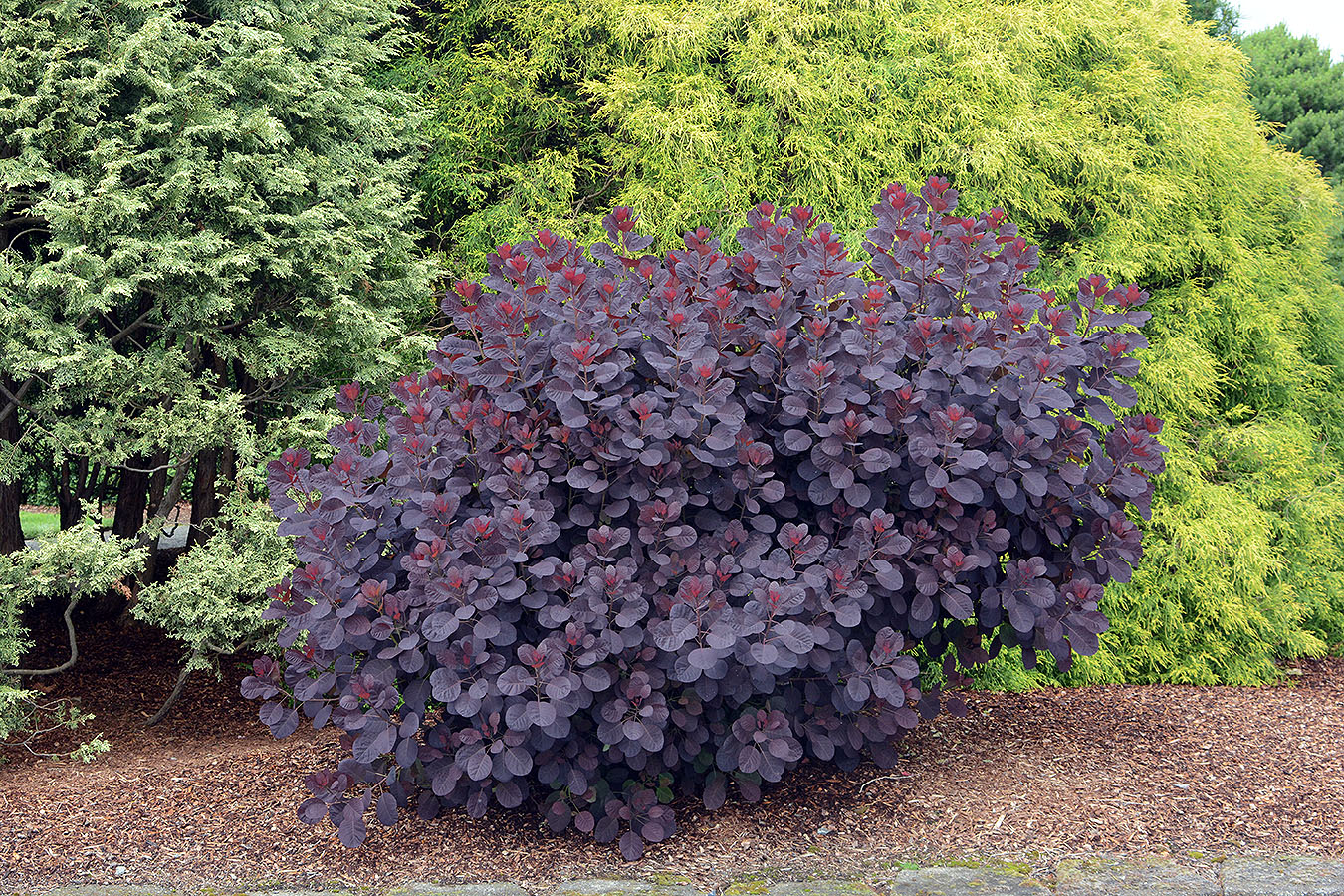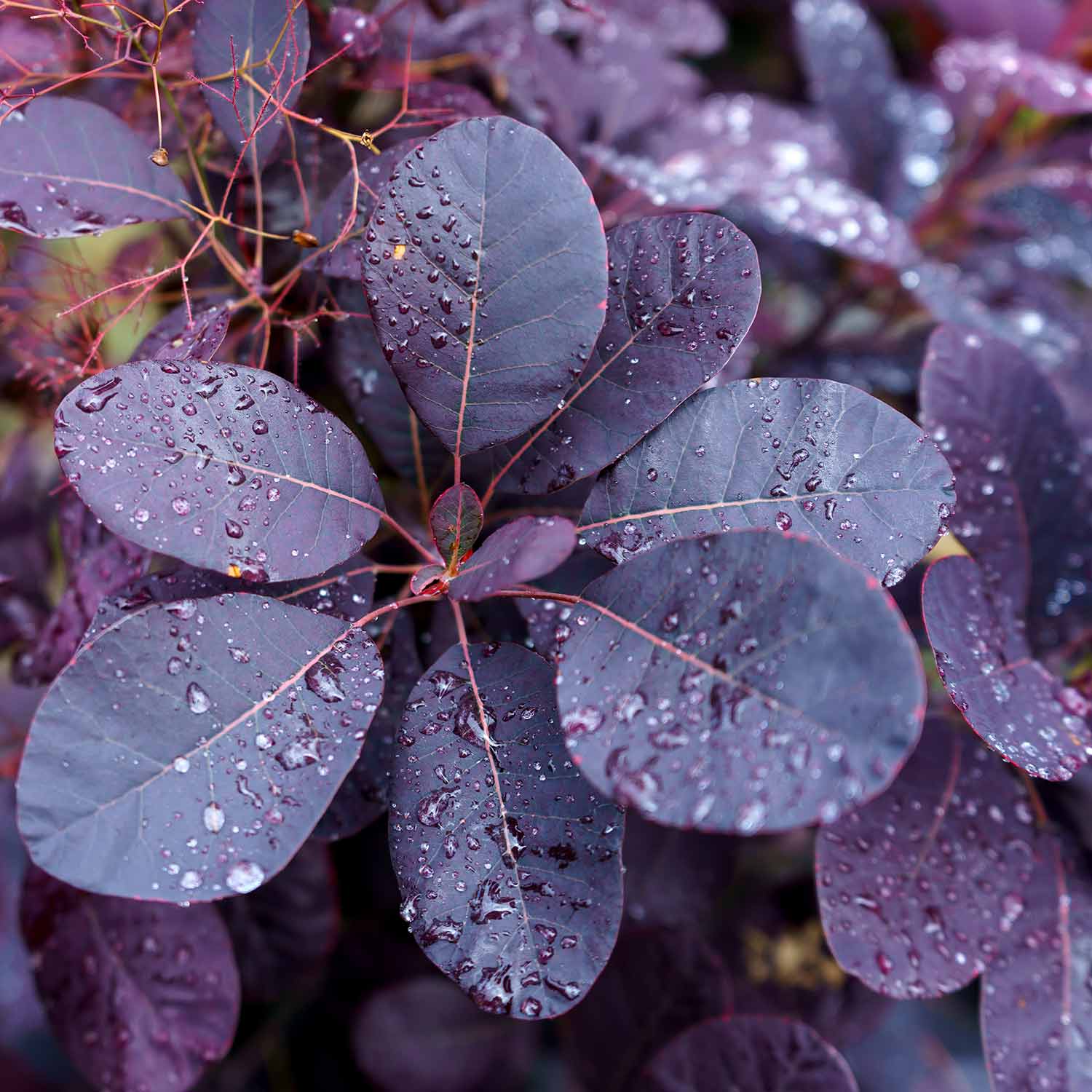The Regal Splendor of Cotinus Coggygria ‘Royal Purple’
Cotinus coggygria ‘Royal Purple’, often referred to as the Smoketree, is a deciduous shrub or small tree celebrated for its dramatic, dark foliage and captivating, plume-like flower panicles. This cultivar, in particular, stands out with its rich, purplish-red leaves that provide a striking contrast in any landscape. Beyond its aesthetic appeal, ‘Royal Purple’ offers a range of practical applications and ecological benefits, making it a valuable addition to gardens and public spaces. This comprehensive exploration delves into the various aspects of this remarkable plant, from its botanical characteristics and cultivation to its landscaping uses and ecological importance.
Botanical Characteristics and Identification
Cotinus coggygria, belonging to the Anacardiaceae family (which also includes cashews and sumac), is native to a wide region spanning from southern Europe to central China. ‘Royal Purple’ is a selected cultivar known for its intense, deep purple foliage, which intensifies in color during the summer months.

Foliage
The leaves of ‘Royal Purple’ are typically oval to rounded, measuring 3-8 cm in length. They are simple, alternate, and have a smooth, entire margin. The most striking feature is their color: a deep, rich purple that can appear almost black in certain lighting conditions. This color is due to the presence of anthocyanins, pigments that protect the plant from excessive sunlight and contribute to its visual appeal. In autumn, the leaves transform into a vibrant display of reds and oranges before falling.
Flowers and Fruiting
In late spring to early summer, ‘Royal Purple’ produces large, airy panicles of tiny, inconspicuous flowers. These flowers are not particularly showy, but they develop into the characteristic “smoky” plumes that give the plant its common name. The plumes are composed of elongated, hairy pedicels (flower stalks) that persist long after the flowers have faded. These plumes, often described as resembling puffs of smoke, add a unique textural element to the plant and persist for several months.

Growth Habit and Size
‘Royal Purple’ typically grows as a multi-stemmed shrub or a small, spreading tree. It can reach a height and spread of 3-5 meters (10-16 feet), although it can be pruned to maintain a smaller size. Its growth rate is moderate, and it adapts well to various soil types and conditions.
Cultivation and Care
‘Royal Purple’ is relatively easy to grow and maintain, making it a popular choice for both novice and experienced gardeners.

Planting and Soil Requirements
This cultivar prefers well-drained soil and thrives in full sun to partial shade. It is tolerant of a range of soil types, including clay, loam, and sandy soils, but it dislikes waterlogged conditions. Proper drainage is crucial to prevent root rot. When planting, dig a hole twice as wide as the root ball and amend the soil with compost to improve drainage and fertility.
Watering and Fertilization
Once established, ‘Royal Purple’ is relatively drought-tolerant. However, regular watering is essential during the first year to establish a strong root system. Fertilization is generally not necessary, as excessive nutrients can promote excessive vegetative growth at the expense of flowering and the development of the characteristic smoky plumes. A light application of balanced fertilizer in early spring can be beneficial for young plants.
Pruning
Pruning is essential to maintain the shape and size of ‘Royal Purple’ and to encourage the development of vibrant foliage. Pruning should be done in late winter or early spring before new growth begins. Light pruning can be done to remove dead or damaged branches and to shape the plant. More extensive pruning can be done to control size or create a specific form.
Propagation
‘Royal Purple’ can be propagated by several methods, including:
Cuttings
Semi-hardwood cuttings taken in late summer or early autumn are the most common method. Cuttings should be 10-15 cm long and treated with rooting hormone before being placed in a well-drained potting mix.
Seed Propagation
Seed propagation is possible but can be slow and challenging. Seeds require stratification (exposure to cold temperatures) before germination.
Layering
Layering involves bending a low-growing branch to the ground and covering a portion of it with soil. Roots will develop from the buried section, and the new plant can be separated from the parent plant.
Landscaping Uses
‘Royal Purple’ is a versatile plant that can be used in a variety of landscaping applications.
Specimen Plant
Its striking foliage and unique plumes make it an excellent specimen plant, creating a focal point in any garden.
Shrub Borders
It can be used in shrub borders to provide color and texture contrast.
Hedging
‘Royal Purple’ can be pruned to create a dense, informal hedge.
Mixed Borders
It complements other shrubs and perennials in mixed borders, adding depth and visual interest.
Container Planting
‘Royal Purple’ can also be grown in containers, making it suitable for patios and balconies.
Ecological Importance
While primarily valued for its ornamental qualities, ‘Royal Purple’ also contributes to the ecological balance of a garden.
Pollinator Attraction
The flowers, although small, attract pollinators such as bees and butterflies.
Habitat Provision
The dense foliage provides shelter and nesting sites for birds and other small animals.
Soil Stabilization
Its extensive root system helps to stabilize soil and prevent erosion.
Potential Issues and Pests
‘Royal Purple’ is generally a hardy and resilient plant, but it can be susceptible to a few issues.
Verticillium Wilt
This fungal disease can cause wilting and death of branches. Good drainage and avoiding overwatering can help prevent this.
Leaf Spots
Fungal leaf spots can occur in humid conditions. Fungicides can be used if necessary.
Pests
While generally pest-resistant, ‘Royal Purple’ may occasionally be affected by aphids or scale insects.
Considerations for Urban Environments
‘Royal Purple’ is relatively tolerant of urban conditions, including air pollution and poor soil. However, it is essential to provide adequate drainage and sunlight for optimal growth.
Selection and Purchasing
When purchasing ‘Royal Purple’, select healthy plants with well-developed root systems. Avoid plants with signs of disease or pest infestation. Check the plant’s label to ensure it is the ‘Royal Purple’ cultivar, as other Cotinus coggygria varieties may have different foliage colors.
Conclusion
Cotinus coggygria ‘Royal Purple’ is a truly remarkable plant that combines aesthetic appeal with practical benefits. Its striking foliage, unique plumes, and adaptability make it a valuable addition to any landscape. Whether used as a specimen plant, in shrub borders, or as a hedge, ‘Royal Purple’ adds a touch of regal splendor and enduring beauty. By understanding its botanical characteristics, cultivation requirements, and landscaping uses, gardeners can fully appreciate and enjoy the unique qualities of this exceptional cultivar. Its robustness and beauty ensure it will continue to be a favored choice for many years to come.

